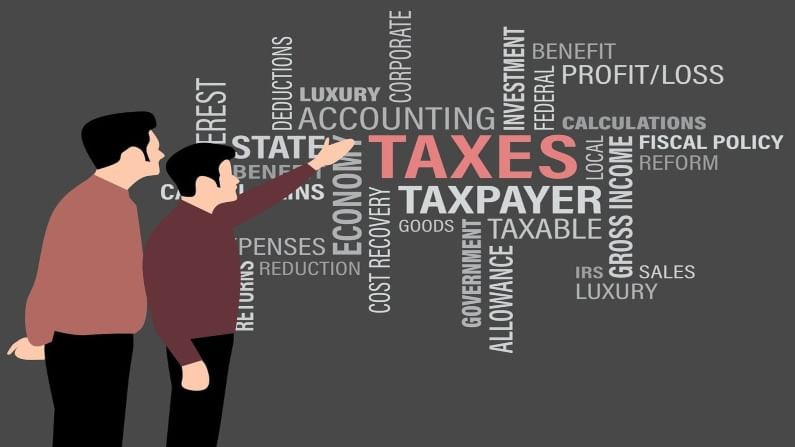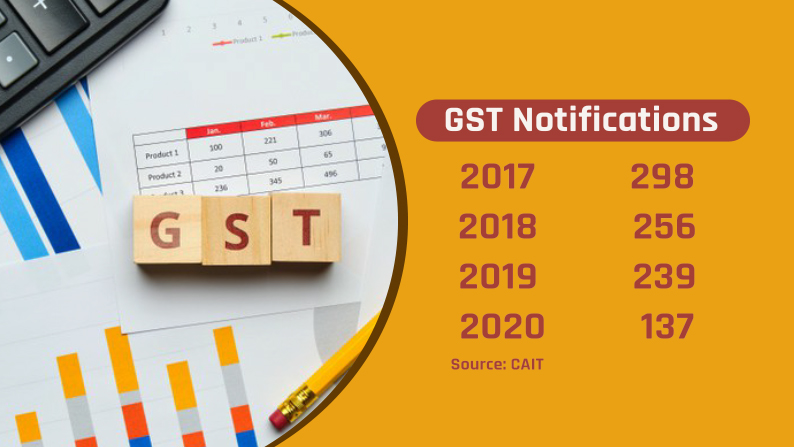As buoyancy picks up, Aatmanirbhar Bharat calls for a ‘Saral GST’
The move will help Aam Aadmi and soften inflation
- Siddharth Zarabi
- Last Updated : March 4, 2021, 14:15 IST

A significant indicator of the ongoing normalisation and sector-specific recovery in the Indian economy is visible from recent trends in the growth of Goods and Services Tax (GST) collections that sustained at above Rs 1 lakh in February, the fifth month in a row post the Covid-19 lockdown induced decline.
The indirect tax collection data squares neatly with recent manufacturing data released by IHS Markit that shows a solid growth performance for the Indian service sector, alongside a robust upturn in manufacturing production.
Given its very nature as a multi-stage, destination-based tax levied on each stage of value addition, the upward trajectory of GST collections is heartening for the Indian economy. For the cash-strapped Centre and state governments, the rising trend in GST revenue is good news for helping them defray their expenditure. Higher tax revenue growth implies lower market borrowing by the Centre and enables higher spending that ultimately enhances economic growth and in turn, yields even higher revenues.
Significantly, the recent upswing in GST collections is not entirely on account of economic activity. A part of the rise, Finance Ministry officials explain, is the systemic changes made at the nuts and bolt level to the GST. A combination of measures through the last year including easier Aadhaar-linked registration and tough anti-evasion measures has plugged leakages in revenue and pushed collections higher.
The success of the anti-evasion drive in shoring up GST collections is even more significant as it comes at a time when direct tax filing data has pointed to a decline in the number of salaried taxpayers earning up to Rs 50 lakh per annum.
In effect, going after GST leakages has yielded results for the taxman. However, it has deeply upset the vocal and politically influential section of the Indian trade and commerce ecosystem – its small and medium businesses, traders and retailers – the backbone of a self-reliant or Atmanirbhar economy.
Just four days after India rang in 2021, the Confederation of All India Traders (CAIT) launched a blistering attack, claiming that instead of being a ‘Good and Simple Tax’, the GST had become a “colonial taxation system” disconnected from ground realities.
What has stoked the ire of traders, the CAIT complained, were amendments and new rules under GST “made the taxation system much complicated and increased the compliance burden on traders”.
Pointing out the nature of the problem, the traders body said the GST law has been greatly distorted since it came into effect in July 2017. “From introduction to December 2020, a total of 927 notifications have been issued by the authorities”, the traders claimed.

CAIT’s Praveen Khandelwal adds that even after four years of implementation, the GST portal is a struggle to use, adding that “all canons of natural justice have been violated by empowering the authorities to cancel the GST registration of any trader without notice or opportunity of hearing”.
On February 26, the frustration of the traders spilled over with a strike in protest against the recent amendments to the GST rules.
“The GST has become very complex and contradicts the original declared vision and purpose with a never-ending cycle of compliances. Tax officers have been given unlimited rights due to which they can seize traders’ bank accounts, property and block input tax credits,” it said.
Given the nascent economy recovery, it is time that the GST Council convenes and uses the opportunity to address the pain points and reform the system. Not only is there an urgent need to resolve all pending operational issues, the state and Centre should move promptly to expand the tax base by bringing in all petroleum products and the liquor industry under its purview.
Logicially, the GST will remain an incomplete transformation without the inclusion of these two items that garner massive revenues for the states and the Centre. The move will benefit the Aam Aadmi and help soften inflation in the months ahead. Not only is controlling consumer price rise politically beneficial, it also leads to lower interest rates in the economy.
(The writer is a senior journalist and public policy commentator. Views expressed are personal. His Twitter handle is @szarabi)
Download Money9 App for the latest updates on Personal Finance.
Related
- ‘ऑपरेशन सिंदूर’ में मारे गए 100 आतंकवादी, राजनाथ सिंह ने किया खुलासा
- Building a portfolio with Debt Mutual Fund
- 30 years of reforms: Looking back at a watershed moment
- Regulatory changes required for making SPACs a successful regime
- Term plan: Beware of these traps
- Insurance Awareness Day: Are you protected from these risks?

